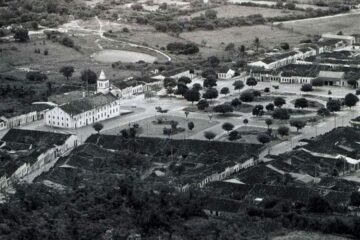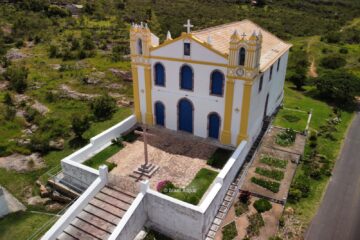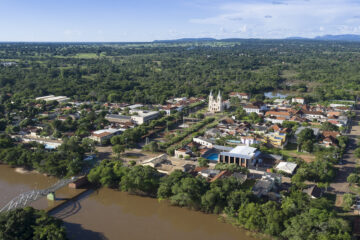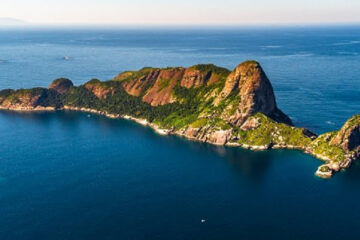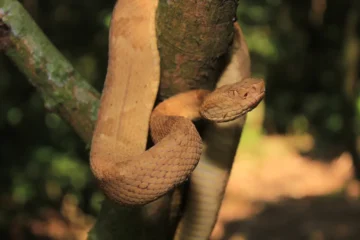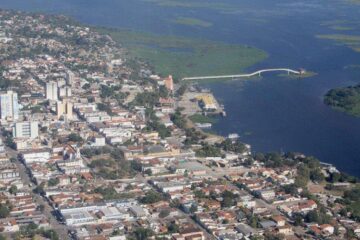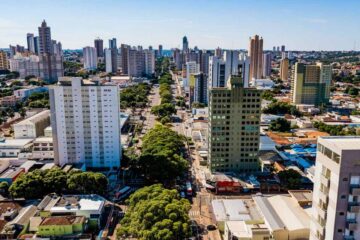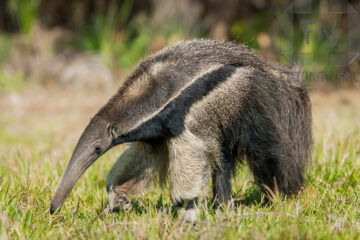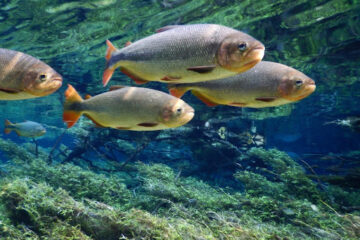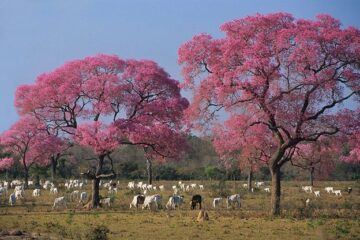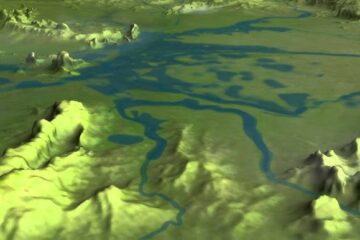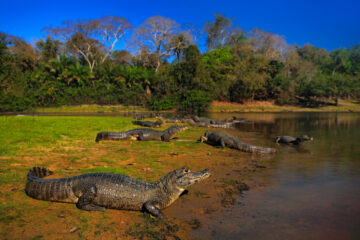The beaches along the 187 kilometers of the Pernambuco coastline are already quite frequented by tourists, but, far from the coast, there is a lesser-known way to refresh the body in dives throughout the year: the waterfalls. The Mata Sul Territory – PE covers an area of 4,003.40 Km² and […]
Tourist Guide to the Brazilian Northeast
Tourist guide to the Brazilian Northeast with beaches, history and culture, as well as the music, architecture, art and geography of Alagoas, Bahia, Ceará, Maranhão, Paraíba, Pernambuco, Piauí, Rio Grande do Norte and Sergipe.
The northeast is made up of a lot of natural beauty and an effervescent culture.
The immense coastline of the Northeast region of Brazil is the main factor contributing to local tourism.
With beautiful beaches, many untouched, which are compared only to those of the Caribbean, and place the Northeast among the great routes of world tourism.
Millions of tourists arrive at the modern airports in the northeast every year.
For some years now the states have been investing intensively in improving infrastructure, creating new tourist centres, and some in developing ecotourism.
The Northeast is attractive for various types of tourism
For beach and resort tourism, the region offers thousands of kilometres of tropical beaches, many of which are only partially developed, others still unexplored. There are an average of 300 days of sunshine a year. There are countless beaches that the Northeast coast offers.
Historical and cultural heritage is also very rich
Noteworthy are the colonial cities of São Luís and Olinda, considered cultural heritage of humanity, and Salvador, the first capital of Brazil, with recovered historical sites, as well as Recife, an area that was dominated by the Dutch in the 17th century.
The city of Salvador was formerly called Bahia, even by residents of the state itself.
It has also received some epithets, such as “Capital of Joy”, due to its huge popular festivities, such as its carnival, and “Black Rome”, for being considered the metropolis with the highest percentage of black people located outside Africa.
Today, it is again called Salvador and currently has a place on the National Historic Register for its rich architectural ensemble, in one of the most famous places in the state – the Pelourinho – listed as a World Heritage Site, Cultural Centre of the World.
Ecological Tourism
For ecological and natural tourism, there are privileged areas in the Northeast, such as Chapada Diamantina, the National Parks of Sete Cidades, Serra da Capivara and Lençóis Maranhenses, the Delta of the Parnaíba River – internationally known for its beauty and biological diversity, as well as several other attractions.
The Northeast also offers rich folklore and handicrafts, characteristic gastronomy and a great diversity of popular festivals, in addition to extremely favourable climatic conditions (sun all year round), strategic location, close to major world markets and new potential for good business in agribusiness, tourism, software, clothing, manufacturing industry and many other sectors.
Northeast Tourism and Travel Guide
Serra Talhada is known as the capital of xaxado and where Lampião was born
The name of the city Serra Talhada in the hinterland of Pernambuco comes from the great mountain range that rises to the north and ends abruptly, in a dry cut – a butcher’s shop. The municipality of Serra Talhada, located 430 kilometers from Recife on the BR-232 highway, proudly cultivates […]
Triunfo has so many attractions such as climate, the old buildings of the 19th century
Triunfo in Pernambuco had a few years of economic exuberance – lived mainly during the 1920s – were enough for the city to earn the title of “Princess of the Sertão”. The elite of Triunfo, 450 kilometers from Recife, declined along with the sugar cane and coffee plantations, but left […]
History and Architecture of the Monastery of St Benedict in Olinda PE
The Monastery of São Bento (Monastery of St Benedict) is located on top of a hill, in the Historic Site of Olinda, with an exuberant natural landscape surrounding it. The proximity to the sea and the strategic position in relation to the Portuguese urban design allows the visitor a picturesque […]
History of the Seminary of Olinda and Igreja de Nossa Senhora da Graça in Olinda PE
The architectural complex formed by the Church of Our Lady of Grace (Igreja de Nossa Senhora da Graça) and the former Seminary is located at the highest point of the Historic Site of Olinda, with lush vegetation composed of fruit trees and palm trees. From there you have one of […]
History and Architecture of the Palácio do Campo das Princesas in Recife PE
The Campo das Princesas Palace was built in 1841 in neoclassical style, but over time it was rebuilt and expanded in eclectic style. [box type=”info” style=”rounded”] Neoclassicism was an artistic and literary period that emerged in the mid-eighteenth century, being an opposition to Baroque and Rococo.The elements of Greco-Roman architecture, […]
History of the Centro Cultural São Francisco in João Pessoa, Paraíba, Brazil
The Centro Cultural São Francisco is located in the historic centre of João Pessoa in Paraíba. The Centro Cultural São Francisco is formed by a magnificent architectural complex that includes: Church of São Francisco Convento de Santo Antônio Chapel of the Third Order of São Francisco Chapel of São Benedito […]
History of the Olinda Carnival and its giant dolls
The city of Olinda-PE is recognised for its history, natural beauty, cultural heritage, whether through the colonial architecture of its churches and mansions or its cultural manifestations. The year 1932 marks the beginning of the use of giant dolls in the Olindense carnival, through the calunga, by the Clube de […]
History and Architecture of Olinda Cathedral
The Cathedral of Olinda (Catedral da Sé de Olinda), also known as the Church of Saint Saviour of the World, is located in the Historic Site of Olinda, occupying a prominent position in the city’s landscape. In addition to being the first religious building constructed by the Portuguese on their […]
History, Construction and Architecture of the Franciscan Convent of Olinda
Although they were present in Brazil since the first Portuguese expeditions, the Franciscans would only settle here in a fixed way several decades later. In this respect, the Franciscan Convent of Olinda is considered the oldest establishment of the disciples of St Francis in Brazilian lands, the cradle of the […]
History of the Facade Tiles of São Luís do Maranhão
The genesis of the tile dates back to the civilisations of the Near and Far East. It was widely used as a decorative wall covering, especially for waterproofing masonry. It came to us from the Iberian Peninsula, especially from Portugal, which achieved great development between the 16th and 19th centuries. […]
Pedro II is a city of history, precious stones and archaeological sites
The city of Pedro II in Piauí is a Piauiense treasure located in the Serra dos Matões and has a variety of options for tourists. For its 600 metres above sea level, it has mild temperatures throughout the year. In addition, the precious stone Opal was discovered in Pedro II […]
Igarassu is a historic city in the Metropolitan Region of Recife PE
The city of Igarassu is located in the state of Pernambuco, 27 km away from Recife, the state capital, as well as close to João Pessoa, the capital of Paraíba, just 90 km away. Located on the north coast of the state, Igarassu is part of the metropolitan region of […]
Sugar mills around Porto de Galinhas in Pernambuco
The sugar mills in the vicinity of Porto de Galinhas PE date back to the time of colonial Brazil. The historical origin and the social and economic development of the state of Pernambuco are strongly linked to the sugar agro-industry, which, after four centuries of apogee, left as a legacy […]
Splendour of geoforms at Lajedo de Pai Mateus in Paraíba, Brazil
The Lajedo de Pai Mateus is an archaeological site that has a rocky elevation of 1.5 km², with numerous other stone blocks. It stands out for its beauty, and attracts tourists from various parts of the country. In the northern northeast of Brazil, in the sectors where there is an outcropping crystalline […]
Areia is home to the first mills in Paraíba and has a lot of history
Nicknamed the “Princess of Brejo”, Areia prides itself on rarely exceeding 25 degrees in a Paraíba in full drought. In the winter, thermometers easily go below 10 degrees. In the Paraíba town of Areia, this experience is accompanied by visits to mills, visits to museums and the opportunity to embark […]
















